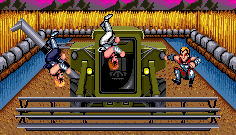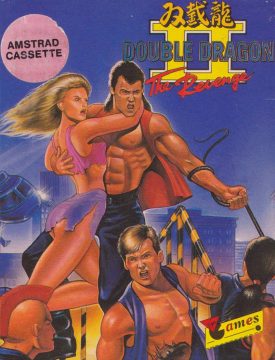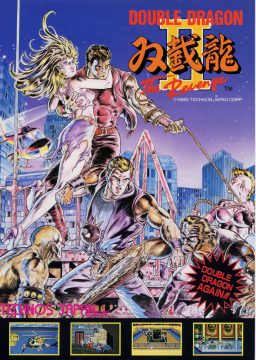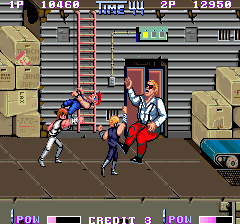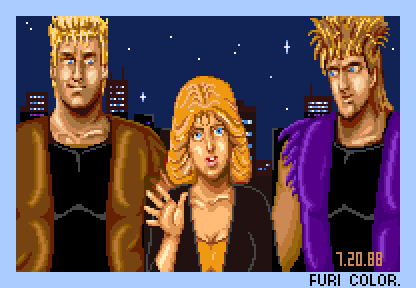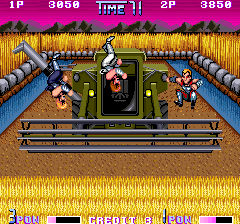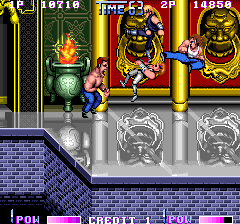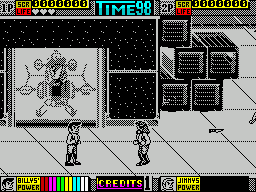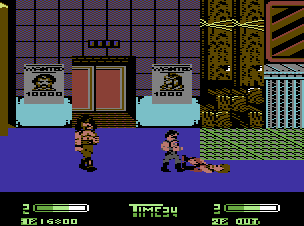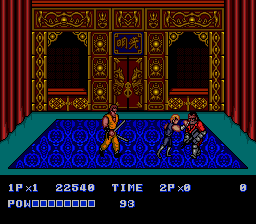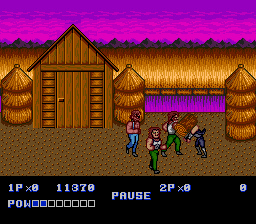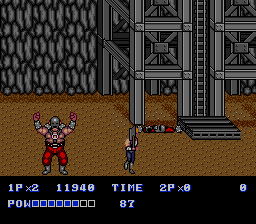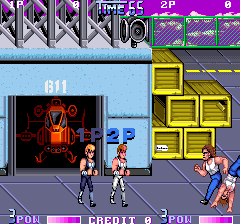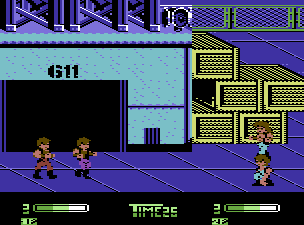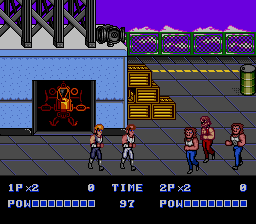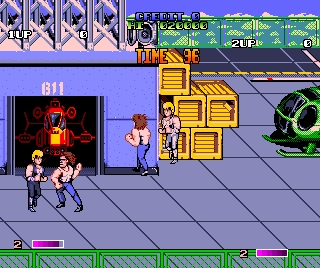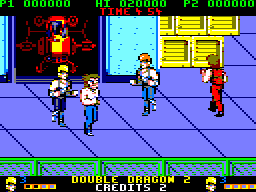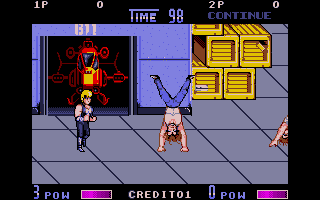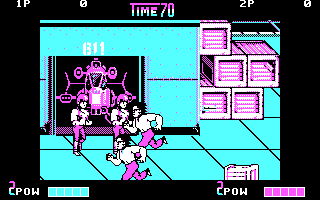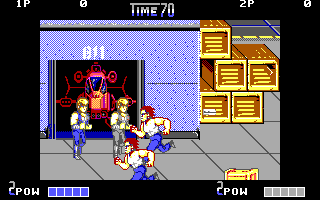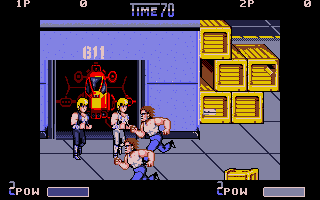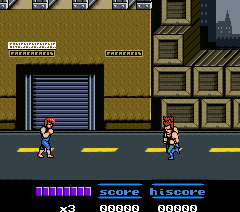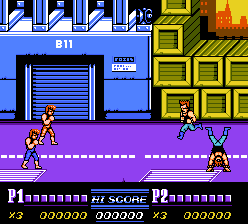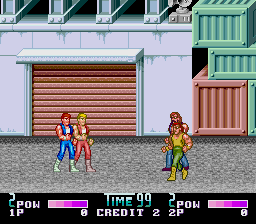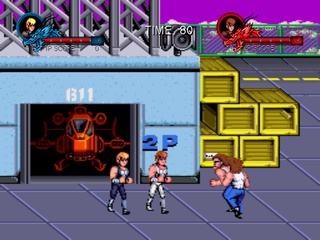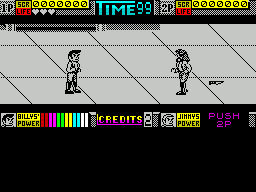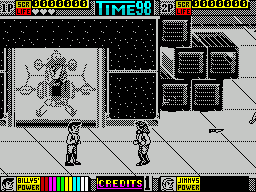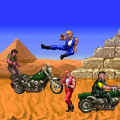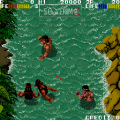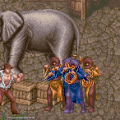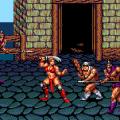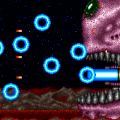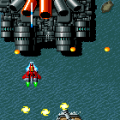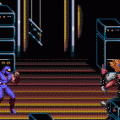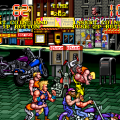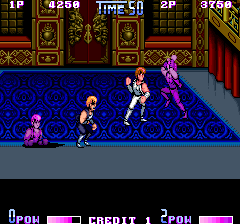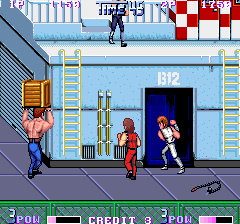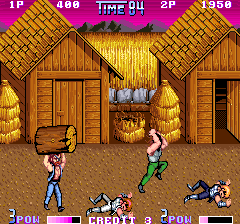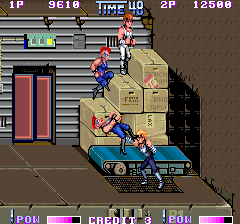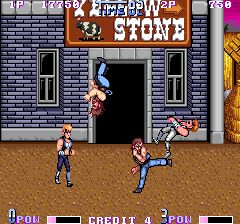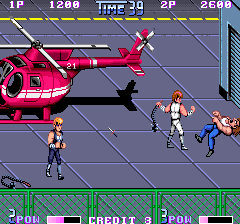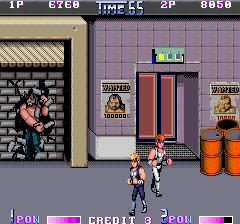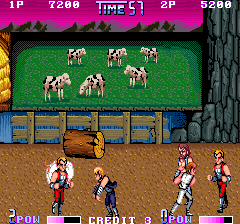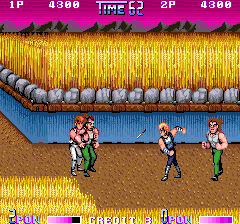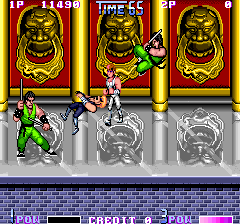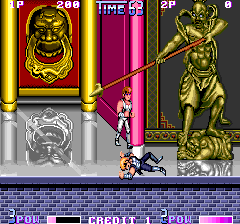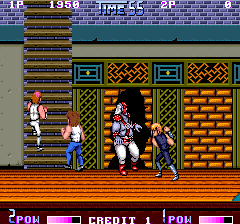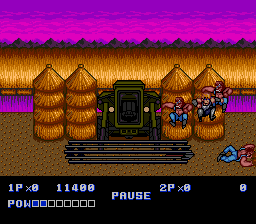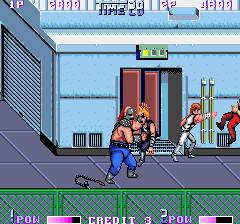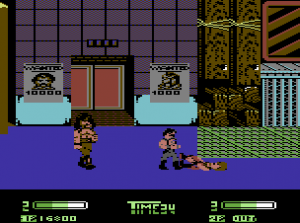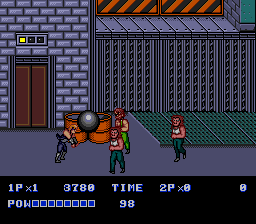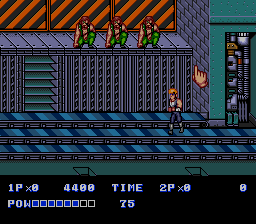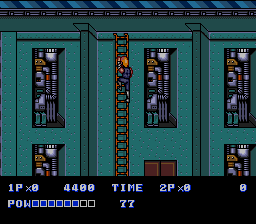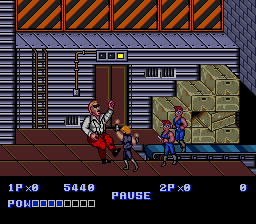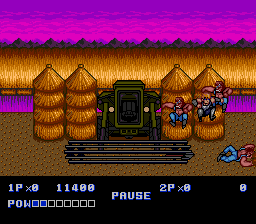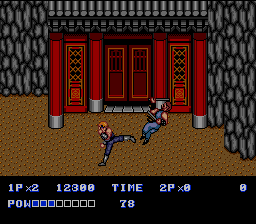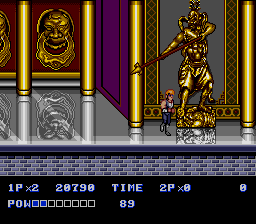- Double Dragon
- Double Dragon (NES / Game Boy)
- Double Dragon 2 (Arcade)
- Double Dragon II (NES/PCE)
- Double Dragon 3 (Arcade)
- Double Dragon III (NES)
- Double Dragon II (Game Boy)
- Super Double Dragon
- Double Dragon: The Revenge of Billy Lee
- Double Dragon V
- Double Dragon (Neo Geo)
- Rage of the Dragons
- Double Dragon Advance
- Double Dragon (Mobile)
- Double Dragon II: Wander of the Dragons
- Double Dragon (Zeebo)
- Abobo’s Big Adventure / Fighting of Double Dragon
- Double Dragon Neon
- Double Dragon IV
- Double Dragon: Other Media
No one would have imagined it after the first game, but in trying to one-up the stakes of the predecessor, Double Dragon II went even more reckless in using Marion (yes, the series is rather inconsistent with spelling her name) as a plot device. While the official artwork still shows her as the damsel in distress rescued by the Lee brothers, with her skirt strategically torn to just barely reveal her butcheeks, the game then opens with Willy cold-bloodedly gunning her down. Now Billy and Jimmy are really angry and set out to avenge their friend, hence The Revenge.
Double Dragon II ostensibly takes place in the same universe as the original, but introduces much more pronounced dystopian sci-fi elements. The first stage now is a military heliport guarded by Burnov, a fat giant wearing a metal mask, who just disintegrates when he is defeated. The second boss Abore wears some strange goggles, and the now long-haired Abobo looks like he’s sporting evil cyborg eyes. In general, the enemy variety has improved a little bit. Bolo has been replaced by the more unique-looking O’Hara, and the kung fu fighter from the NES game makes his arcade debut as Chin Taimei, except now he is fighting with a pair of short sticks. All the regular enemies return, but have been redesigned to look more ragged and Road Warrior-esque.
Not much has changed in terms of game structure. The Lee brothers still go beating thugs throughout four belt-scrolling stages to confront the Black Shadow Warriors’ (the gang name got upgraded in between games, apparently) boss Willy at the end. Since the Lee Brothers don’t have a girlfriend to fight over anymore, their evil shadows are summoned for the final showdown, who can throw energy projectiles and disappear into the ground, only to pop out again for a really unfair grapple attack from behind. Even two of the three stages are reprises of the first game, but stage three is a cool old-fashioned crop field where Billy and Jimmy can get run over by a combine harvester if they’re not careful.
Even though there still wasn’t much competition on the market – Final Fight was yet a full year in the future – the guys at Technōs apparently felt a need to innovate at least in some way. Unfortunately, the area they chose to experiment in was one that really didn’t need fixing: the controls. The new input scheme doesn’t assign attacks to buttons in a fixed manner, but relative to the direction the player is facing. So the left button always attacks left, the right button always right. This may sound intuitive at first, but to anyone who’s played a beat-em-up before (and probably most anyone else, too) it’s really hard to get used to. The standard forward attack is always a punch and the standard backward attack a kick, so if you want to kick an enemy in front of your character, you first have to turn around. The whole affair is more confusing than anything, and even if you thing you’ve mastered it, you might still get thrown off your game when things get crowded. Despite the weird controls, the available moves are mostly the same, with two notable exceptions: The headbutt is gone, but replaced by a much more impressive attack. At the height of their jumps, Billy and Jimmy can perform a spinning kick in the air, which henceforth became one of their trademark moves in the series.
Overall, Double Dragon II is a worthy successor, if a little bit too similar to the original, and the one big innovation with the controls is the part that’s most off-putting about it. The more rugged look suits the setting well, and the music is as great as ever – the “Easy Lover” ripoff in the first stage notwithstanding.
The 16-bit computer ports by Binary Design look a lot more like the real deal this time. The Amiga version even uses a nice high resolution that shows more of the playing field even than the arcade original, while the Atari ST and IBM PC versions are rather cramped with thick black borders. Unfortunately the one-button problem is still a major inhibition for enjoying any of them, and with the new move set this is somehow even worse than before. However, the Amiga version justifies its existence thanks to the great tracker chiptune music alone, even if it’s only one melody playing the entire game. The Amstrad CPC version looks almost astonishingly good, but the gameplay feels a bit stiff while the hit detection is rather loose, which surprisingly makes the game really easy. Two players can easily create a barrage of shovels where no enemy can break through.
The ZX Spectrum has two versions of the game, one for the standard 48K models and an enhanced port for machines sporting 128K of RAM. The former only shows a tiny strip of the area and thus feels really claustrophobic. It also needs to reload from tape every few steps, has significantly shortened stages and omits all the bosses and anyone who isn’t one of the two standard goons. The 128K version retains a bit more of the original experience, but still has weird changes like bosses in the middle of a stage. Both versions feature braindead opponents most of the time, but occasionally they can catch you in infinite hit loops and utterly destroy you.
Double Dragon II on the Commodore 64 is almost great, considering the circumstances. Of course it still can only rely on one button, but the pacing and scale are changed in a way that makes the input scheme more controllable, and it’s much easier to pull off any desired move. On the downside, the hit detection is really bad. Enemies keep slipping away from attacks and standard moves don’t even hit stun them properly, so they almost always counterattack immediately afterwards. There’s also an offputting delay to most moves. All this makes it very difficult to complete a stage within the strict time limit. Even then, the “three lives, no continues” policy makes this an extremely hard version despite the initial appearance of comparatively high playability.
The version for the Genesis – or rather Mega Drive, as it was only released in Japan – was published by PAL Soft in December 1991 – much earlier than Accolade’s port of the first game. The ending screen is replaced by a black-and-white recap of the boss fights, which looks like it was supposed to be the background to a credits scroll, but no names of its creators are given. Since PAL Soft generally appears only as a publisher, it is unknown who actually programmed the game, but it appears they didn’t have a too solid grasp on optimizing for the Mega Drive. In contrast to the almost arcade-perfect port of the first game, the graphics are all scaled down significantly, the lack of colors is very apparent, and many of the stage decorations are missing. More than a fifth of the screen is covered by a big black border for the status bars, too.
The movement and scrolling always feels a bit choppy and uneven, and the pacing of the action is kind of messed up. Linda is now the most dangerous enemy of the early game, as a group of her can pinch you in a spot for a lot of abuse, especially when playing alone. The rest of the game is actually easier than in arcades and quite generous with the continues, but you better do equal damage to the two final Chins, or else the remaining one is gonna form one deadly duo with machine gun Willy. The Shadow Lee brothers, on the other hand, are ridiculously weak.
The quest is almost the same as the original, but stage two has been mixed up a bit. The Abobo punching through the wall at the very beginning is missing, but the area now contains a detour up a ladder, where you fight a few additinal goons on a set of conveyor belts.
Double Dragon Trilogy is mostly the same deal for this game as it was for the first, with one exception: an additional option to switch the controls to a more conventional mapping where one button is always used for punches and the other for kicks. This makes it much easier to cope, especially for those with no experience of the arcade game, but it still shines through that the game wasn’t designed for this method. Standing kicks still always go backwards, no matter what.
Comparison Screenshots
